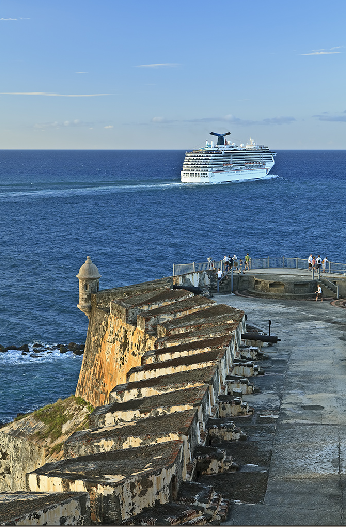Yesterday you heard from newspaper editor Kyle Wagner about how to pitch a photo essay to an editor.
Most of my work is published in magazines, where photo essays are less common. But still, photo captions are an important part of the sale of my photos.
If you missed Kyle’s tips on captioning your photos for a photo essay, you’ll find them here.
Following are some tips for writing good photo captions for sales to magazines:
1. Be accurate: I once saw a picture of a “pastelillo” (a half-moon-shaped fritter stuffed with meat or chicken popular in Puerto Rico) captioned as “fried taco.” (I’m not making this up.)
Nothing will lose your credibility with an editor more quickly than providing erroneous information in a caption. The editor will be embarrassed when an alert reader contacts her about the mistake. You will be embarrassed when the editor calls you. And, after that, you will likely never hear from that editor again.
When you’re in the field, especially in unfamiliar territory, assume you know nothing (you will probably be right about that) and get tourism brochures and other information that will help with caption-writing later. Taking pictures of informational plaques or signs is also a good idea. I even carry around a small pad to write down unfamiliar names and other information when nothing else is available.
2. Be truthful: This is a sticky subject since there is no bright line for what you need to disclose and how much manipulation is acceptable. Some publications (mostly newspapers) have specific guidelines regarding what you have to disclose and how much you can manipulate an image, but most do not.
In general, I err on the side of caution and disclose things like whether an animal is in a zoo (I add “captive” at the end of the caption) and whether I used a special digital filter when I edited my photos in Lightroom or Photoshop.
As long as you disclose this information upfront to your editor, it is then up to her to decide whether to use the picture or not. I do not disclose commonly applied enhancements like brightness, contrast and saturation because it is standard practice to optimize these parameters in an image. But if I apply a filter, I’ll say in parentheses after my caption “(digital filter applied).”
3. Be brief and descriptive (and do not state the obvious): Most images already have plenty of information available (a picture is worth a thousand words, right?). So think of your captions as providing supplemental information.
For example, a picture of a castle by the ocean like this…
… might be captioned as follows:
“Cruise ship departing and San Felipe del Morro Castle (1540s-1786), San Juan National Historic Site, Old San Juan, Puerto Rico”.
This caption gives the editor plenty of information in one sentence, whereas something like “Castle by the Ocean and ship” would state the obvious and not provide additional information.
4. Be flexible: Every publication has a different way of captioning photographs, and you should be aware of each magazine’s preferences before submitting your work.
For example, when I submit work to photography magazines in conjunction with a story, I include technical information like f-stops and shutter speeds with my captions, since that’s the kind of information readers expect.
Nature magazine captions typically include scientific names of animals; captions in outdoor enthusiast magazines include the height of a mountain; and so on.
[Editor’s Note: Learn more about opportunities to profit from your travels (and even from your own home) in our free online newsletter The Right Way to Travel.]
Travel Photography Resources
5 Dos and 2 Don’ts for Travel Photography
Take Great Photos And Get Paid More For Your Travel Articles
Turning a Photography Hobby into a Monthly Income
The Pros Of Selling Your Images As Stock Photography
16 Mobile Photography Tips And Tricks Every Photographer Should Know
Camera Buying Guide: How to Buy the Right Camera
Travel Writing Resources
How To Become A Travel Writer – The Easy Way
Easy Steps To Landing Your First Byline As A Travel Writer
Marketing For Travel Writers: 5 Ways To Get Started
22 Travel Story Ideas To Get You Published


